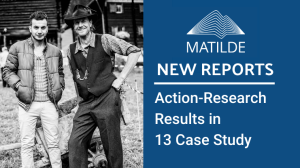Alberto Dianin*
Javiera is a 55-year-old woman who arrived in Bolzano from Chile in 2015. Since then, she has been working for a cleaning company that mainly deals with big offices in Bolzano South. At 5 pm, when everyone (or almost everyone) leaves the office to go home, she starts working and finishes her shift at 10 pm. If she´s lucky, she can catch the bus at 10:15 pm, which takes her home in Bronzolo directly in 26 minutes. But if she has overtime – which is not so rarely-, she has to change 3 busses to get her home and it takes almost one hour. She moved in Bronzolo about 2 years ago. Maybe it’s not compatible, considering workplace and the bus stops, but at least the rent is cheaper. Moreover, she found out that colleague of her also lives in Bronzolo and she has a car. In this way, her colleague gladly offers a ride to Javiera the two times a week where they have the same working time and Javeria manages to get home a bit earlier.
Typical day of Javier is an example of transport (in)equity. She has a job that places temporal constraints: she has to travel when public transport’s schedule is typically rare. At the same time, the job places some budget constraints: she can’t afford to buy a car or live in a central neighbourhood. To solve the problem, sometimes she takes the bike and rides for almost one hour to the workplace (especially in summer); but her knee (that she had a surgery in 2016) places her a physical constraint. All in all, the bus represents an essential commodity for Javiera. However she can access it pretty hardly. Paradoxically, it is highly easier to use the bus for people who lives in downtown. Like Anna, who does not need the bus anyway: her job is 7-minutes away by bike or 13 minutes away by walk from home.
Alleviating these complex inequities is a hard task to accomplish for the development of transport policies, even for virtuous cities and regions. Autonomous vehicles are a technology that might contribute to this, if properly used. For instance, self-driven minibuses operating on demand could take Javiera home after the work, offering in this way a convenient and direct service even in the late evening. She should just pay a standard bus ticket and share the ride with other travellers requiring a similar connection at the same hour. On a wider perspective, such a solution could be helpful also for elderly, students or just for a couple coming back home after having spent the evening at friends´ place. Nevertheless, such a scenario might come true or not depending on how this technology will be developed and used. For example, if autonomous vehicles are interpreted as a mere “upgrade” of private car rather than as collective mean, than most likely scenarios could be very different than the one proposed before.
As already said, much will depend on the way of interpreting this technology in transport policies, rather than on the technical possibilities offered by the technology itself.
 Alberto Dianin*: Researcher for Eurac Research since January 2018, he develops European and local projects about sustainable mobility, scientific reports, articles for international journals, and presentations for technical conferences. His work mainly focuses on improvement of passenger transport in rural areas especially across regional/national borders; the development of sustainable tourism mobility; and the impacts of innovative forms of transport as autonomous vehicles. On this last topic, he has been developing his PhD dissertation in transportation and spatial planning at the Vienna University of Technology.
Alberto Dianin*: Researcher for Eurac Research since January 2018, he develops European and local projects about sustainable mobility, scientific reports, articles for international journals, and presentations for technical conferences. His work mainly focuses on improvement of passenger transport in rural areas especially across regional/national borders; the development of sustainable tourism mobility; and the impacts of innovative forms of transport as autonomous vehicles. On this last topic, he has been developing his PhD dissertation in transportation and spatial planning at the Vienna University of Technology.












